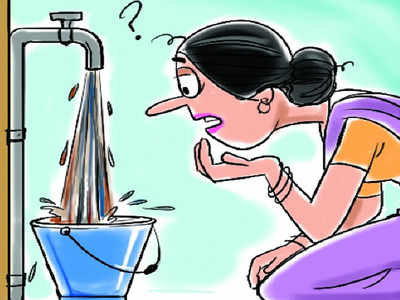The Hindu 07.08.2012
Too many people, too little water
Study classifies Bangalore Urban and Rural ‘critical’
The failure of the city’s water infrastructure to keep
pace with the spiralling population has resulted in many areas in
Bangalore being perpetually in the grip of a crisis.
Corroborating
this, the Census of India 2011 stated that 16.9 per cent of Bangalore
Urban district’s population still depend on borewell water. Over 12.5
per cent still depend on “untreated” tap water.
Water
management experts say that this figure could be even higher
considering piped Cauvery water supply is limited to the core city areas
as of now. Some new areas on the city’s periphery will soon get Cauvery
supply with the Bangalore Water Supply and Sewerage Board (BWSSB)
planning to commission its Cauvery Stage IV Phase II next month. This
will augment the city’s existing supply of 900 million litres per day
(mld) by another 500 mld.
Critical status
Irrigation expert Capt. Raja Rao told
The Hindu
: “A study by the Mines and Geology Department in association with the
Central Ground Water Board has classified Bangalore Urban District as
well as Bangalore Rural District as ‘critical’ as far as the
availability of ground water is concerned.”
Any
further sinking of borewells in these two districts will be at the peril
of the existing ones and, in the days to come, existing borewells will
either dry up or the yields will diminish drastically. “That apart,
there are several other indications that show that any new development
work in these two districts will have to entirely depend on surface
water,” he said.
Tertiary treatment
Stressing
the need for tertiary treatment of water, he suggested that the
authorities should not give approval to any new residential or
industrial project without ensuring availability of surface water
through BWSSB. The former BWSSB chief B.N. Thyagaraja, who heads the
expert committee set up by the State government to suggest alternative
sources of water for Bangalore, said that the last resort would be to
lay dual pipelines in the entire city for potable and non-potable
purposes.
“Even if it means inconvenience to the
citizens for sometime till the lines are laid, the dual pipeline system
will be of immense help in water conservation,” he said. The water board
had started implementing this in all new layouts, he added.


